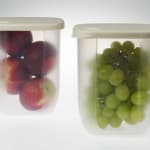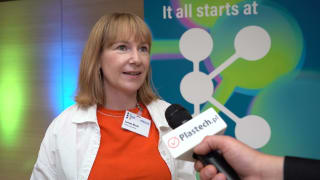 Thin-walled plastics packaging is used in a wide range of industries including dairy containers like yogurt cups, yellow fats, frozen foods, fruit and vegetables, bakery, ready meals, juices, soup and meats.
Thin-walled plastics packaging is used in a wide range of industries including dairy containers like yogurt cups, yellow fats, frozen foods, fruit and vegetables, bakery, ready meals, juices, soup and meats. Recently it has also been used in glass and can replacement for commodities like meat and preserves, which reduces weight and opens up design opportunities. John Nash, Head of Strategic Research at AMI Consulting, estimates that over 2.5 million tonnes of polymer are used in this market in Europe, with dairy and disposables the largest sectors. Polypropylene and polystyrene hold the biggest share followed by PET, and there is also some PVC used in these applications. During the economic downturn many packaging companies showed a drop in revenue, which led to restructuring. Eurostat data indicates that retail sales for food, beverage and tobacco reached a low in the first quarter of 2009 and have started to grow since that time, although a drop in the second quarter of 2010 is cause for concern.
Rexam High Barrier Plastic Containers has seen a rise in demand for ready meals, driven by cash-rich time-poor consumers in family groups where all adults are working. The choice and quality of food has improved making this a nutritious, safe option for busy households. In addition, ambient convenience foods don’t require special storage conditions and can have a long shelf-life. Recently, brands like Campbell’s soups, Chef Boyardee, Bush’s, Tulip, Maggi, Princes, Isabel and Chi-Chi have moved from cans and jars to lightweight plastics containers with lids. Rexam produces this new high barrier packaging using a unique rotary melt-phase process and incorporating regrind: there is reduced stress which allows downgauging of the barrier EVOH layer. The seal under the lid provides tamper-evidence and the label can be used to add gloss or insulation.

Sustainability is the key word for packaging producers worldwide including RPC Barrier Containers. Reducing food waste is a major factor, for example single-serve packaging can make big improvements, and 25% less fresh fruit is wasted when it is pre-packaged. In France, the introduction of Grenelle 2 in trials in 2011 will eventually require a Life Cycle Analysis for all packaging used in the country. Plastics processors can take basic steps to source responsibly, lightweight, reduce power consumption, reduce waste and improve the efficiency of distribution. Heinz is a key RPC customer and has a target to cut packaging use by 15%.
Reynolds Packaging has reviewed the Courtauld Commitment, where companies such as Tesco, Carrefour, Sainsbury’s, Heinz, Procter & Gamble, Nestle, Coca Cola and Ahold, have agreed to reduce packaging. Phase 2 of the agreement calls for smarter packaging, for example by reducing the weight of packaging and by reducing supply chain waste. Thermoformers already recycle skeletal waste as the material is high quality, keep the sheet gauge down to reduce costs, and are looking to reduce power consumption, which is a function of the machine, the material density and type.
Active packaging improves shelf-life and the main technology is oxygen scavengers with a global market value of around US$1150 million, followed by self-venting films at US$610 million, moisture scavengers at US$513 million and microwave susceptors at US$406 million according to ALBIS PLASTIC, which is a player in the oxygen scavenger market. The main end use market is meat packaging, followed by snack foods and ready meals. The original Amosorb oxygen scavenger was developed by BP Amoco, then bought by Ciba in 2001 and by ALBIS in 2009, however it was limited by cost and large particle size. The next generation scavenger is smaller particle size for thinner films, has higher absorption and better dispersion. It is compliant with the EU regulation 450/2009 on active and intelligent packaging.


